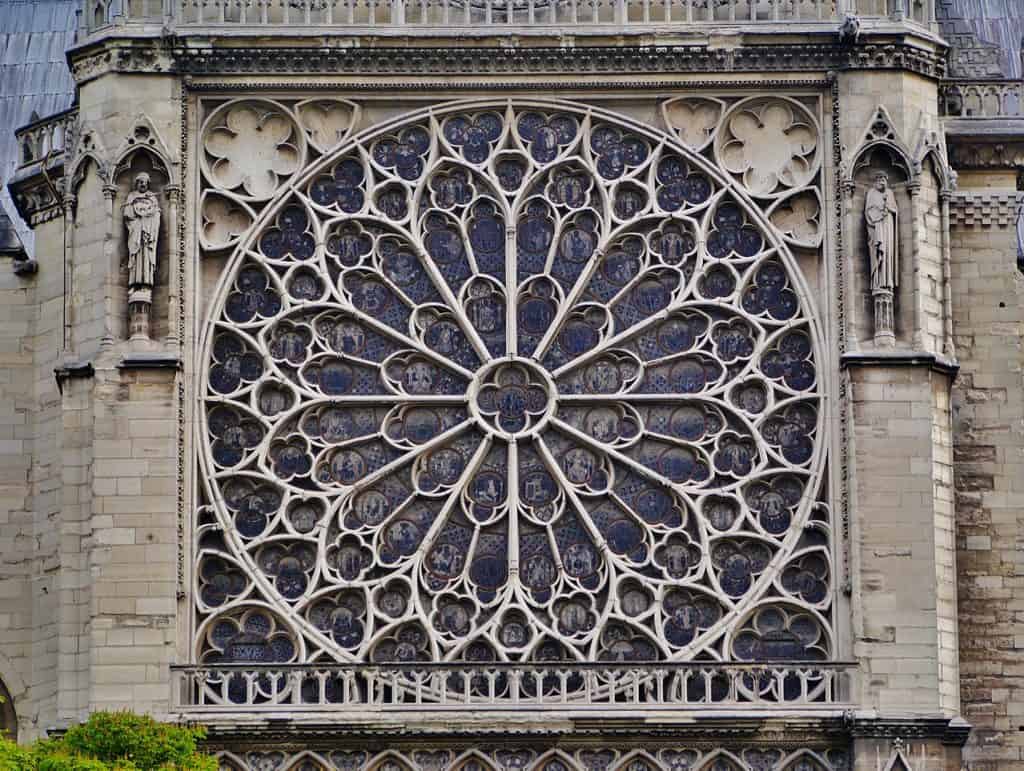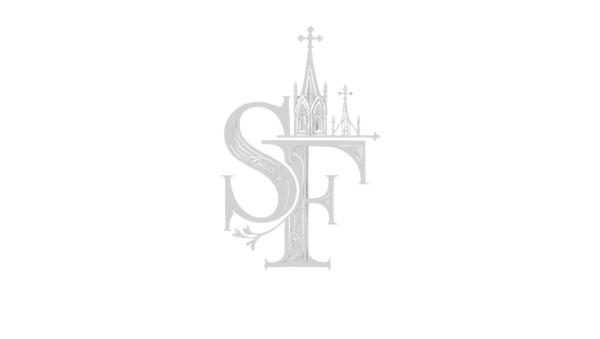
Step into a Gothic cathedral and your gaze is often drawn not only upwards but outwards, to a circle of radiant light and colour: the rose window. These vast stained glass wheels are among the most recognisable features of Gothic design, captivating visitors with their beauty while concealing layers of meaning. More than decoration, rose windows were carefully planned works of geometry, theology, and artistry, designed to embody both divine order and human imagination.
Circles of Heaven: Geometry and Order
The rose window begins with the circle, a shape long associated with eternity, perfection, and the divine. Medieval builders embraced sacred geometry, believing that mathematics reflected the harmony of creation.
The Circle – representing eternity and God’s infinite nature.
The Radial Design – often symbolising the unity of creation, with all parts converging on a central point, the divine.
Quatrefoils and Trefoils – repeated within rose designs to embody the Trinity or the four Gospels.
Geometry was not only symbolic but practical. Careful calculations ensured the delicate tracery of stone could support walls of glass, balancing strength with lightness.
Light as Theology

Rose windows transformed sunlight into a sermon. To the medieval mind, light was a metaphor for the divine, and stained glass was its vessel.
Chartres Cathedral’s North Rose (1250) tells the story of the Old Testament, its deep blues radiating wisdom and tradition.
The South Rose represents the New Testament, with fiery reds and vivid greens illustrating the triumph of Christ.
The West Rose depicts the Last Judgement, reminding viewers of salvation and eternity.
Each window was a visual text for an illiterate society. The glass became a “book of light,” teaching scripture through colour and form.
Symbolism in Colour and Image
Every rose window was a tapestry of meaning:
Blue – heaven, eternity, the Virgin Mary.
Red – the blood of Christ, sacrifice, passion.
Green – rebirth, creation, hope.
Gold – divine light, eternal glory.
Figures of prophets, apostles, kings, and angels radiated from the centre, reminding worshippers that all of history converged on God. Even the smallest details carried meaning: animals, plants, and mythical beasts woven into glass as lessons in morality, temptation, or protection.
Engineering Miracles
Behind the splendour lay remarkable skill. Builders developed intricate stone tracery to hold the immense weight of glass, refining styles over centuries:
Plate Tracery – early designs with solid walls cut into simple circular shapes.
Bar Tracery – lighter frameworks of thin stone bars that allowed ever larger and more elaborate designs.
Rayonnant Style – a phase of Gothic defined by spectacular rose windows, where stone became lace and glass seemed to float.
Cathedrals like Reims, Amiens, and Sainte Chapelle in Paris showcase the height of this engineering artistry.
The Rose Window as a Spiritual Experience

To stand beneath a rose window was to step into a vision of heaven. Light poured through jewel toned glass, casting shifting patterns on stone floors and pillars. The wheel of colour mirrored the cosmos itself, a meditation on order, eternity, and divine presence.
For medieval worshippers, this was not abstract art but a living symbol of faith. Each ray of colour carried meaning, reminding them that the world was both fragile and ordered, fleeting yet eternal.
The rose window remains one of the most mesmerising achievements of Gothic architecture. It is at once art, geometry, scripture, and engineering, binding together light and stone in a vision of eternity.
The next time you step into a cathedral, pause before the rose. Let your eyes trace its symmetry, its colours, and its hidden stories. You will not just see glass and stone, but a vision of the medieval imagination reaching for heaven itself.
Resources and Further Reading
UNESCO World Heritage Centre – Chartres Cathedral
Amiens Cathedral – Official Website
Notre Dame de Paris – Rose Windows Background
Reims Cathedral – Centre des Monuments Nationaux
Stokstad, Marilyn. Medieval Art. (Overview of Gothic stained glass and architectural symbolism)
Spires and Facts is an independent platform created for educational and informational purposes only. This article has been compiled from publicly available sources to share knowledge and inspire curiosity about Gothic architecture and history. We are not affiliated with, endorsed by, or sponsored by any of the organisations, websites, or individuals mentioned here. Any external links are provided for reference only and do not imply promotion or partnership. Readers are encouraged to use their own discretion when exploring further resources.
